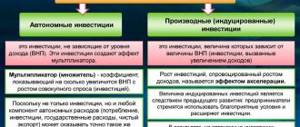Rules for investing in HYIPs
Since most of the information on the blog is devoted to HYIP investments, it is necessary to mention the nuances of working with them:
- Don't believe in the hype legend . As a rule, all projects write that they are conducting some kind of financial or investment activity. If this is really the case, good; if not, it’s okay. This doesn't stop you from earning money. But there are still people who beat their chests and believe to the end in the company’s activities, despite the alarm bells. Nothing good awaits them.
- Invest only the amount that you don’t mind losing or only part of the pre-created investment capital.
- Do not use borrowed funds to invest in hype projects.
- Try to break even and withdraw the deposit body as early as possible.
- Do not invest or reinvest in projects that have announced a restart (rebranding, etc.), as a rule, this means that the project will close soon.
- If possible, do not spend the profits received from investments , but use them to increase passive income.
- Don't forget about the risks when investing in projects with high returns. There can be no one hundred percent guarantees.
Where to get money for investment
Most of us don't live in rich countries with high salaries, so I'm sure not everyone can just snap a finger and find money to invest. However, this must be done to strengthen your financial position. I offer you several ideas on where to get money for investment.
Idea No. 1. Use unplanned income
Each of us is used to living on approximately the same amount per month, not counting large purchases and trips. However, there are months when income exceeds the average level - due to bonuses, gifts, winning the lottery... The usual desire in this case is to treat yourself to a new purchase, but this money can be spent on investments.
Idea No. 2. Use your salary balances
This doesn't happen often, but still. If there is extra money left at the end of the month, use it to invest. And so that these balances remain at least sometimes, learn to spend money correctly - keep records of income and expenses, go to the store with a list, try to save on big purchases. One kopeck, two kopecks - look, there is extra money.
Idea No. 3. Sell something you don't need
This recommendation applies even if you don't want to invest - why accumulate junk? Nowadays, anything can be sold online, and the money received can be made useful.
Idea No. 4. Give up bad habits
Have you ever tried to calculate how much money you spend on smoking and alcohol per month? If not, I highly recommend it (for this you need to keep track of your personal finances) - you’re unlikely to like the numbers. Perhaps this will help you reconsider your attitude towards bad habits - and it will be good for both your health and your wallet. There will be extra money that can be invested.
Idea No. 5. Part-time job, freelance
There are now many opportunities to earn extra money online. If you know something that people need, you can find a part-time job. Since this is not your main income, you can spend it on investments.
Idea No. 6. Cost optimization
If you learn how to spend money wisely, your expenses will decrease. As you know, if you haven’t spent, you’ve earned, this way you can find resources to invest money in investment instruments.
Idea No. 7. Allocate part of income
Previous ideas for finding money to invest did not involve deteriorating your quality of life. But let's face it - saving 10% of your salary won't change anything much, you'll just have to be a little more careful with how you spend your money. But this 10% over a few years can help you accumulate good capital, which will improve your financial situation.
TOP 10 investment rules
This section contains advice based on the experience of successful investors who have earned millions in capital from the difference in the prices of securities, precious metals, and cryptocurrencies. This is what a novice investor needs to know in order to minimize the risk of investing his finances.
How to choose the right time to invest? Once you have free money, use it to increase your capital.
Investment rules that will be useful for novice investors:
Having a goal
You need to set a goal for yourself, and not just accumulate capital. The goal must be expressed in specific numbers. Financially expressed plans are more achievable; in addition, you can calculate the approximate time frame for earning the desired amount.
Cost control
You need to start controlling your income and expenses. Many everyday expenses can be significantly reduced by using the savings to purchase stocks, bonds, cryptocurrency or other assets.
Diversification
Create your own investment portfolio. Investments in different companies help reduce investment risks. This is called diversification (distribution) of risks. By investing capital in projects with different profitability and payback periods, you minimize the possibility of losing your deposits and create a balance.
How to properly form an investment portfolio for a novice investor ? A portfolio can be formed from different types of businesses, assets of companies of different scales of activity. It may consist of blue chips (shares of very well-known stable companies) and securities of less popular companies.
If you need help putting together an investment portfolio, write to me, I will help you put it together.
Self-development
Constantly learn. Read feature articles and stock market news, study investment tools, world market trends, and the legislative framework. Books with biographies or advice from successful investors can also improve your earning prospects.
Thorough Analysis
Conduct a detailed analysis of the companies in which you are going to invest. Study the open data that the company publishes for shareholders - profit for the year, profitability of various areas, asset value and other characteristics of the effectiveness of successful activities.
Only “correct” loans
It is advisable to use only your own funds for investment. If you attract borrowed funds (naturally, at a certain interest rate), then you need to select highly profitable assets for investment. The percentage of investment profit should significantly exceed the interest on the loan.
7. No fixed income
You cannot trust companies that guarantee a fixed profit on their securities. The price of stocks and bonds is determined by the market and can change up or down several times a day. This applies not only to securities, but also to any other investment projects.
You can predict the approximate level of profitability, focusing on market trends, the characteristics of a particular line of business and the company’s reputation, but no one can give exact figures;
Control of emotions
Learn to control your emotions. Decisions made based on emotions are often wrong. If you give in to panic or excitement, you can buy stocks at inflated prices or sell too early securities that will bring profits in the future.
You can't follow the herd
Don't buy the most popular securities. Overly advertised stocks can quickly rise in price for no reason, simply because of increased demand. They are not backed by real value, and can just as quickly fall in price, causing losses to the holders. The market is like a pendulum - extreme deviations in one direction are replaced by almost the same movement in the opposite direction.
This rule is also valid for other areas of investment, be it HYIPs, cryptocurrency or another asset.
Tax benefits
Take advantage of tax breaks. Citizens of the Russian Federation have the right to open individual investment accounts with preferential tax treatment. Using an IIS, you can buy securities and currency. But such accounts provide for at least 3 years of investment. You can open an IIS with taxes deducted from contributions or income received. For short investment periods, a deduction for contributions is more profitable; for a long period, income tax is more profitable.
The path to successful investing
A few figures: the average annual rate of banks in developed countries for household deposits provides for the payment of profit on deposits from 1% to 5%. In developed countries, bank deposits have long been no longer considered an investment, in the classical sense, but are one of the means against the depreciation of money due to inflation. Free cash lying around at home is not an investment because its value decreases as a result of inflation and it does not provide income. Unfortunately, in our post-Soviet countries, financial thinking is distorted, so a handful of green pieces of paper stored under a “mattress” is synonymous with the word “investment” for the average person.
An incorrect approach to the distribution of available capital interferes with the growth of the investor’s overall wealth. That's why some people buy houses, while others dream about it. Proper distribution ensures the growth of total capital, the opportunity to purchase things that are not available through simple accumulation of funds and is an alternative to classic sources of income.
Golden rules of investing
There are also several golden rules for investing in the financial and cryptocurrency markets.
- Follow the market trend , i.e. increases or decreases in the prices of certain assets. When analyzing changes in value, we can conclude that there is a “bullish” or “bearish” trend. Bulls are those who play long, and bears are those who play short. The question is not whether to play on the bulls or the bears, but to be among those who are currently winning. That is, buy high and sell even more expensive, or sell low and buy even cheaper;
- We need to limit losses and allow income to grow . That is, if a stock brings constant losses, you need to find the strength to close this position. If securities bring stable, albeit small, profits, there is no need to sell them ahead of time. Many beginners begin to sell stocks that are rising in price, fearing that their value will fall. Experienced players try to squeeze the maximum profit out of every profitable position.
Purchase criteria
The question naturally arises as to what criteria should be used to determine the undervaluation of shares being considered for purchase. Ben Graham suggested selecting companies based on the following indicators:
- The size of the company's business (this concept involves investing in companies related to businesses of above average size);
- The values of multipliers showing the ratio of the company’s current market capitalization to profit (P/E) and to its book value (P/B) should not exceed the following values:
- P/E < 15
- P/B < 1.5
- (P/E)х(P/B) < 22.5
- The company must have financial stability, namely:
- The size of its current assets must exceed the size of short-term debt obligations at least twice;
- The amount of the company's working capital must be greater than its long-term debt obligations;
- It must show profit over the past ten years, and in addition, the amount of profit must increase during this time by at least one third;
- Dividend payments must have been made for the last twenty years.
Value investing is based on the theory of market inefficiency. The essence of this theory (as applied to the topic we are considering) is that real market conditions are far from ideal and those prices that are formed as a result of the balance between the supply and demand curves are not always fair.
If the market were 100% efficient, then prices would always reflect the real value of the goods presented on it. There would be no such thing as undervaluation and overvaluation, and investors would have much less opportunity to benefit from it.
By the way, a popular method of analysis based on price charts—technical market analysis—is based on a completely opposite statement. The main postulate of technical analysis, which states that the price takes into account everything, has as its premise the assumption of the unconditional efficiency of the market.
Warren Buffett's Principles
Warren Buffett is an American billionaire who made his fortune through successful investments. He is considered one of the most successful investors in history, using his own investment rules when investing capital.
When forming an investment portfolio and searching for profitable assets, Buffett methodically analyzes companies according to the following parameters:
- simplicity and clarity of business;
- stability and reputation of the company;
- availability of development prospects;
- competence and honesty of top managers;
- rational distribution of profits;
- providing shareholders with transparent information about the state of the business and profitability;
- profitability of activities;
- profit margin;
- the ratio of the increase in the market value of the business to the increase in retained earnings;
- the price of shares is overestimated or underestimated compared to its real value.
That is, Buffett analyzes the market value of the business and the company’s securities at the last stages, having previously analyzed all aspects of the business that should be understandable and beneficial to him as an investor.
Various methods for assessing the effectiveness of commercial activities are used. If open even data is available, an analysis of financial stability and the likelihood of bankruptcy can be made.
Successful investors recommend necessarily studying news content, based on the analysis of which you can find undervalued shares (securities whose market value is lower than their nominal value).
What investment options are there?
Conventionally, “collective” investment in government or non-government securities is the most common and saddest investment experience of the average resident of the post-Soviet space.
The new generation can ask their parents about how “the state borrowed from them at interest” by issuing bonds and what came of it. Impressionable young ladies are better off asking their mothers and grandmothers, as men can shock you with taboo vocabulary.
Unfortunately, government securities are often issued during periods of global change and crisis. Which could end badly for the investor. Who will only have a feeling of satisfaction from helping the state during a difficult period.
Warren Buffett's Basic Rules of Investing
- You need to buy shares when their market value is significantly lower than the actual price. The best option is securities whose value does not exceed 2/3 of the net asset price (when recalculated per 1 share).
- Have patience. Value investors don't expect quick profits. Anyone who wants to get rich quickly is unlikely to get rich.
- You need to develop endurance and discipline. There is no need to panic by buying or selling assets at the slightest market fluctuations. You need to have your own opinion and base your decisions on logic.
- Choose companies whose activities you understand. By understanding key business processes, opportunities for optimizing them and obtaining maximum benefits from activities, the investor becomes one of the owners of the business, and not just a shareholder.
- Long-term prospects are more profitable than short-term ones . You need to choose shares of companies with an assessment of their activities for 4-5 years in advance. To choose securities that will generate income for a long time, give preference to companies whose products are in constant high demand; product prices are not regulated by the state. Firms that produce a unique, in-demand product can make a profit.
- When choosing a company to invest in, pay attention to the honesty and competence of its managers . If a manager is focused on increasing profits for shareholders and knows how to increase the value of the business, this is a big plus when choosing an investment property. You should not trust companies that confidently guarantee income, as well as those whose accounting is poorly organized or non-transparent.
- Diversification of risks allows you to make profits in the long term. If you're wondering where to start, create an investment portfolio of stocks of companies with different levels of profitability. This way you are more likely to earn income. You also need to understand that if out of ten companies in a diversified portfolio you make a profit from six of them, this is normal.
By what rules should investments be made?
One of the most prominent financial figures, successful investor Warren Buffett formed 10 basic principles, following which he achieved success and earned his fortune through investing. Here are the main ones.
The first principle is a long-term horizon
This principle makes it possible for the person making the deposit to look around and objectively assess the state of the financial market, without being distracted by the nuances that are happening in the economy at a particular moment. For example, this principle rejects taking into account investor sentiment, fluctuations in the cost of raw materials and similar factors that affect short-term investments.
An example that most clearly illustrates this principle is the shares of the well-known Coca-Cola company. Initially, its shares were worth $40, but with the rise in sugar prices, they fell sharply in price and were worth half as much. However, now the shares of this company are among the most expensive in the world.
The second principle is to carefully study the company you are going to invest in.
This point implies not so much a financial and analytical study of the company as a subjective one. It is worth understanding what the scope and type of activity of this company is, what services and goods it produces and how needed they are in the sales market. It is also worth finding out how the population feels about it.
The fourth principle - know how to put an end to it
Sometimes it happens that the enterprise in which money is invested becomes unprofitable. Don't cling to it like it's the last straw. There will be other good projects in life, have the courage, perseverance and courage to give it up.
Fifth principle - do not rush to make a deal
Many people now, with the development of IT technologies, save their time and conclude deals very quickly, without a qualitative study of the company only on the basis of forecasts and statistical data, and even then in the best case. W. Buffett spoke unequivocally about this: “Behind stocks are not only charts, but also real business.”
Seventh – look for winning stocks
The essence of this investment rule is this: the economic situation of the country is uneven. And against the backdrop of any, even the most unprofitable economy, there are growing stocks - these are the winning stocks. And the investor’s task is to find them.
Eighth – structure and calculations
In order not to get bogged down in the chaos of numbers, structure them - keep records, calculations, etc. Then you will make meaningful transactions, not on the basis of a vague “gut feeling,” but on the conclusions drawn from the company’s calculations and analyzes.
Ninth – history is important
There is no need to rush to conclusions about a company if its activities have been successful over the past year. Study its history as best you can, so you can avoid many pitfalls.
Tenth – invest today, receive tomorrow
The basic principle of investing is to invest money today in order to get good profits in the future. Buffett never indulged in excesses and did not buy himself fancy things, yachts, etc. But he invested all his available funds in investments, which allowed him to achieve such heights.
The investment methods presented by W. Buffett are effective. This was confirmed by more than one investor. It was they who helped the financier become what he is now - one of the world's luminaries in the universe of finance.
You might be interested
- Risk diversification
Dividend calendar- Investments and guarantees
- Investments (company rating)
Rule 72 in investing
The Rule of 72 in investments is a mathematical method that makes it possible to calculate how long it will take for the capital invested in an asset with a fixed interest rate to double. Knowing the interest rate, using this method you can calculate the period required to double the investment or, conversely, choose a suitable period and look for projects with a certain percentage. Rule 72 is most often used to analyze the feasibility of investing in bank deposits, because Only approximate forecasts are given for securities.
That is, the calculation formula is the ratio of the figure 72 to the interest rate of income, which shows the number of periods for doubling the investment amount.
Let's look at an example of using Rule 72 in investing.
Example: it is planned to invest capital in the amount of 100,000 rubles at 18% per annum. Dividing 72/18, we get 4 years. If you need to find out at what percentage to invest 100,000 rubles in order to double it in 3 years, divide 72/3 and get a rate of 24%. That is, you need to look for assets that are guaranteed to yield a profit of 24% per annum.
Principle 72 is also suitable for estimating an investor's losses due to inflation. Taking an average of 4% inflation, divide 72/4 and get 18 years (over 18 years, the value of capital can depreciate by half if it is not used in business).
The advantage of the Rule of 72 is that it accounts for compound interest when interest accrues on a larger amount in future periods. Disadvantages include calculation errors at high percentages.
Is it really possible to start investing from scratch?
Some types of investing require large initial capital and relevant knowledge, while others require investing small amounts with minimal knowledge (collective investing).
Value investing allows you to start investing with minimal initial capital. It is enough to choose an undervalued but promising company or currency.
It is also worth considering the possibility of reinvesting small amounts in new projects with its subsequent increase. Thus, a series of several successful investments allows you to bring investment capital to a new level, which will provide the opportunity to invest in projects that require large financing. The more money is in active circulation, the greater the investor’s income will be.
The 4 percent rule in investing
The 4% rule makes it possible to calculate how much money can be spent from the accumulated capital so that it does not decrease within 30 years. Using this formula, you can calculate how much you need to earn through investments, taking into account mandatory monthly expenses.
Example: if you need to spend 100,000 rubles on living every month (1,200,000 rubles per year), then you will need to accumulate capital in the amount of 30,000,000 rubles, invested in profitable stocks and bonds. When withdrawing 4%, the probability of saving the accumulated amount varies between 96%; if you withdraw 5% or 6% of the total amount, the probability decreases to 67% and 51%. Risks of capital decline vary depending on the weight of stocks and bonds in the investment portfolio.
The 4% rule is often used when calculating the optimal amount of savings needed for retirement. To reduce the risk of losses in the event of a market collapse, you need to accumulate funds to create your own fund for crisis situations (in an amount equal to mandatory expenses for 1 year). Thus, if the market collapses, you can use the funds from the crisis fund and not sell your assets ahead of time. Actively accumulating your pension fund, saving up to 50% of your expenses. You can ensure your early retirement.
The main advantages and main disadvantages of investments
The main advantage of investing compared to running a business is lower risk.
In addition, the activity itself can be entrusted to professionals. Which are still less likely to make mistakes, especially if the client has chosen a strategy with minimal risks.
In practice, this means a stable income (exceeding inflation, interest on bank deposits and interest promised by pension funds). Thus, you can achieve financial independence and stable passive income. That is, to ensure a stable old age, regardless of the situation on the oil or real estate market.
The main disadvantage of investing is that you can invest in the wrong place.
Even deposits with minimal risks still turn out to be unprofitable. In addition, minimal risk means minimal profitability. Which will be “perceptible” only if you invest a serious amount. And if you already have this significant amount, then you can protect it from inflation in other ways.
Individuals who aggressively invest money in shares of “risky” companies are often left without savings. And sometimes - livelihood. However, sometimes they become billionaires and a movie is made about them with DiCaprio in the title role.
Books for investing
If you don't know where to start, read books and advice from successful investors. Books written by successful people who have earned millions on stock and financial exchanges will help improve the literacy of both novice and experienced investors. They talk about their secrets and strategies, share their experiences of mistakes and victories.
Best books:
- "The Intelligent Investor" by Benjamin Gray. The first edition dates back to 1949. and it was thanks to the principles outlined in this book that Warren Buffett made his billions.
- "Warren Buffett. The best investor in the world." In this book, Alice Schroeder describes the biography of the most famous and successful investor, his ups and downs, and invaluable experience.
- "Rich Dad's Guide to Investing." An American with Japanese roots, Robert Kiyosaki, gives detailed and engaging advice to novice investors. A bestseller that became a sequel to the book “Rich Dad Poor Dad.”
- "Zone trading". A publication that does not teach the basics and subtleties of trading, but allows you to form the correct mindset of a successful trader and get psychological preparation for playing on the stock exchange.
- "Warren Buffett's Rules for Investing." Jeremy Miller collected in this book letters from investors to his partners. They provide an opportunity to understand the train of thought and philosophy of this successful person.
- "Herbert N. Casson's 12 Rules of Investing." An autobiographical publication based on the author's twenty years of experience in successfully earning large capital on the stock exchange.
- "Alchemy of Finance." Stock market player George Soros, who became a billionaire, describes in his book his own investment experience and the theory of reflexivity, which predicts the dynamics of movement and trends of stock markets in different periods.
If you are interested in the right investment of a small amount , because... If you are just starting to play on the stock exchange, first read the advice of experienced traders. There are many trainings and books that will help you go from zero to first profit. In the process of obtaining useful information, try to apply it in practice.
You can also contact me for advice on issues that interest you. Over time, you will be able to develop your own strategy and tactics, form your own investment portfolio and earn large capital.
Choosing an investment method based on a quantitative risk assessment.
In order to correctly assess the total amount of risks when choosing a particular investment method, it is necessary to indicate the numerical values of the most possible risks. Risks are selected based on probability theory and mathematical statistics as the most possible. The basis laid in the methods of quantitative risk analysis is the measurement of the degree of influence of the most important risk factors for the project under consideration on changes in the overall payback and efficiency criteria for a given investment.
A quantitative analysis of possible risks is always calculated based on the results of assessing the effectiveness of a particular method and has approximately the following sequence:
- Calculation of boundary indicators.
- Assumption of different possibilities, situations and changes that may arise in the method under consideration.
- Analysis of the impact of these changes on profitability indicators, payback and timing.
The values of the boundary indicators are fairly transparent characteristics and show the degree of stability of the investment method or project under consideration under realistically possible changes. An important criterion for assessing the sustainability of investments is the break-even point - an indicator of the value of sales or other financial processes over the estimated period during which income coincides with costs. At the same time, the main indicators and characteristics of the investment method under study should not change during the estimated period.
Analysis of the impact of possible changes is based on the following factors of direct influence: the total volume of products sold by the enterprise, the number of transactions carried out, the degree of inflation, competitiveness, the share of the company's goods or services on the market, opportunities for rising prices and sales volumes, the required or additional volume of investments.
To assess possible risks and their impact on the results, it is worth looking at three scenarios for the development of events: close to reality, pessimistic and optimistic. The last two scenarios are unlikely in principle, but their implementation should not be discounted. Analysis of scenarios allows us to understand changes in the main indicators of the chosen investment method when a certain situation arises and, as a consequence, changes in the main indicators of the effectiveness of the investment instrument.
Quantitative and qualitative risk analysis allows you to fairly accurately assess the weaknesses of the investment method under consideration, understand the sources of risks, calculate approximate changes in profit and other indicators when the expected situation occurs and, of course, plan several measures to minimize negative consequences. This approach, based on assumptions about the occurrence of the most realistic situations, is justified, since the investor gets an excellent opportunity to assess the degree of risk and understand how he will act if such a situation occurs. Such foresight when choosing the most optimal and profitable investment method will save not only money, but also time and nerves, because all the most possible risks have already been taken into account. In principle, it is impossible to foresee everything, therefore, in the analysis of quantitative risk assessment, it is necessary to consider the most common situations.
Buying a holiday/vacation home
Foreigners have the right to purchase holiday homes, but this requires special permission. Several factors are taken into account.
Accommodation must be located in a location designated by the cantonal authorities as a resort, where special quotas apply. Cantons and communities can set their own restrictions, such as allowing foreigners to only buy residences that are already owned by foreign citizens.
Holiday homes cannot be rented on a permanent basis, but only periodically. Apartments should, if necessary, be made available for use by the appropriate owner to serve tourists, especially during the high season.
Generally, the usable area (which includes areas such as kitchen, hallway, toilet, indoor swimming pool, sauna and hobby room, excluding balconies, stairs, basement and attic) and area of the property should not exceed 200 sq. m. m and 1000 sq. m respectively. Large areas up to 250 sq. m and 1500 sq. m are accordingly permitted if you can prove their necessity.











